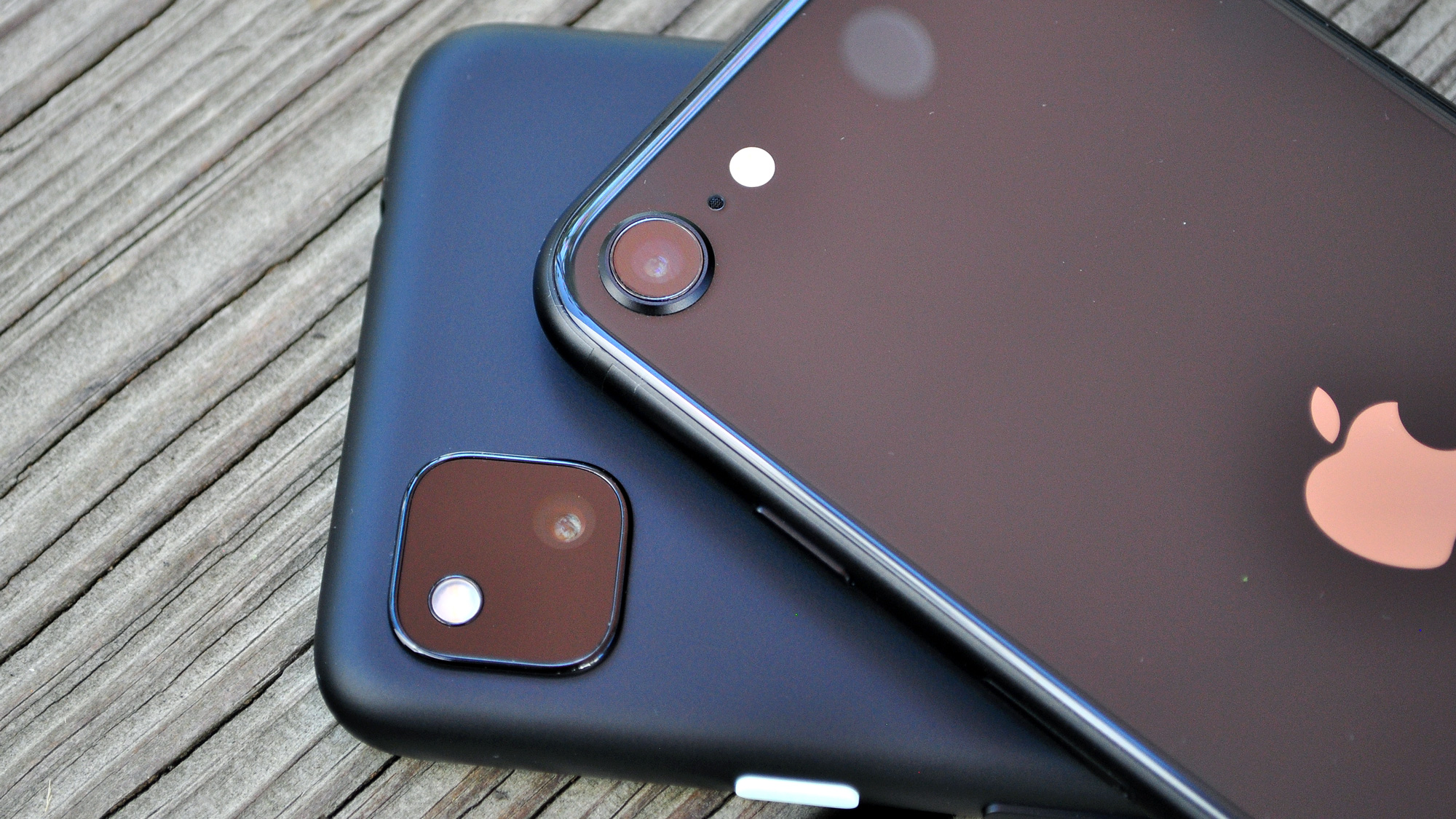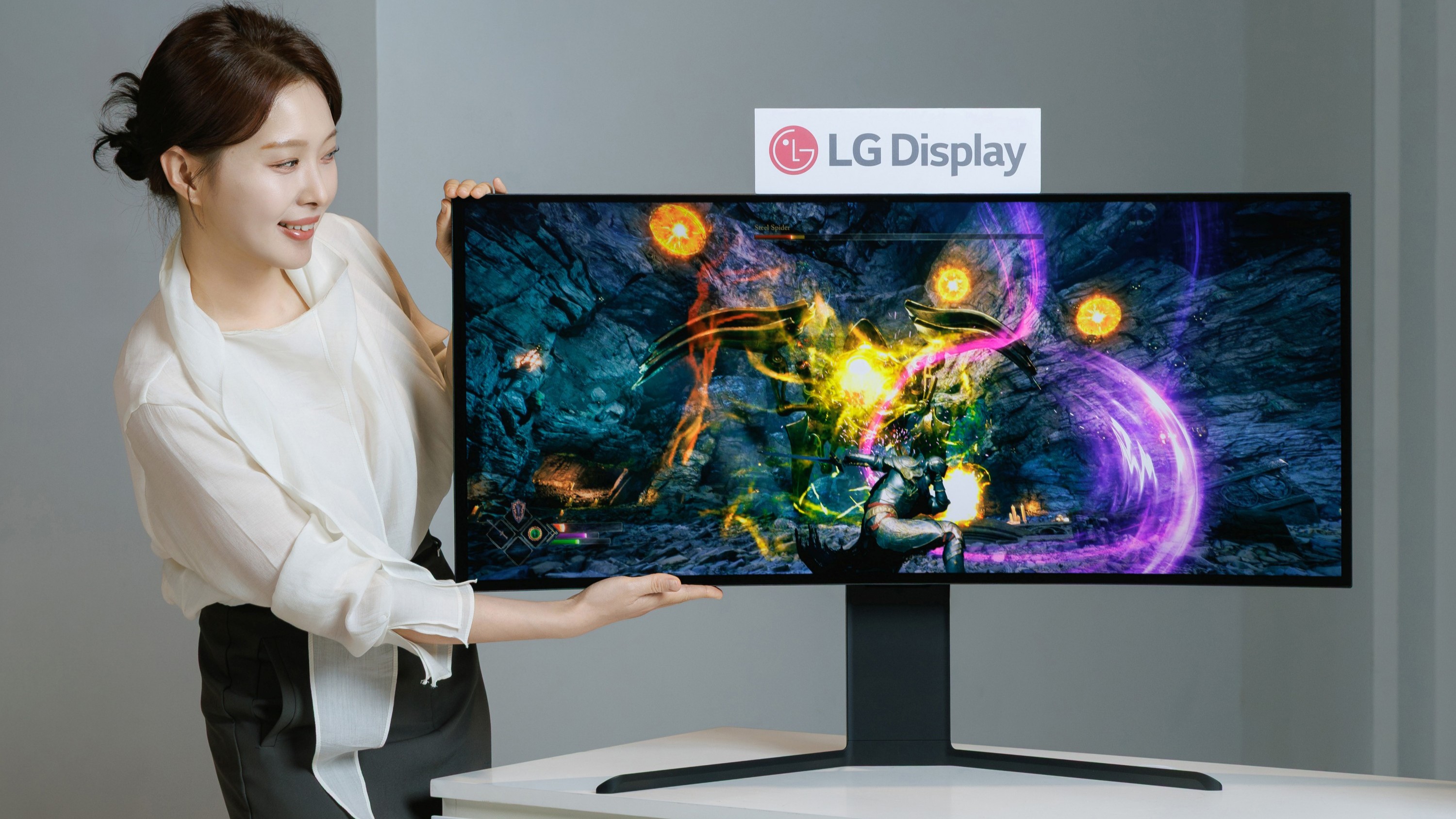Google Pixel 4a vs. iPhone SE camera face-off: Which phone wins?
You’ve got two devices to consider if you want the best cheap camera phone

Once upon a time, if you wanted to take good-looking photos with your phone, you needed to splurge on a pricey flagship model.
Thankfully, these days that’s no longer the norm. Apple and Google have blazed a path forward for the affordable midrange camera phone with the iPhone SE and Pixel 4a, by incorporating the very same lenses and sensors in their cheaper handsets as you’ll find in their more expensive ones.
- The best cheap phones you can buy today
- Google Pixel 5 vs. Pixel 4a: How Google's 2020 phones will stand apart
- New iPhone 12 release date, price, specs and leaks
Sure, both devices only have single-lens cameras on the front and back. However, it turns out that’s all you need to capture some seriously impressive pictures. And with the Pixel 4a costing $349 and the iPhone SE starting at $399, no matter which you choose, you’ll spend less than half on either of these best camera phones than you would on a high-end Pixel 4 or iPhone 11 Pro.
But which is better? To find out, we captured a range of photos with both phones for this Google Pixel 4a vs. iPhone SE camera faceoff. Here’s what we discovered.
Pixel 4a vs. iPhone SE: Camera specs compared

- Pixel 4a: Rear 12.2MP (ƒ/1.7); Front 8MP (ƒ/2.0)
- iPhone SE: Rear 12MP (ƒ/1.8); Front 7MP (ƒ/2.2)
Before we commence with Round 1, let’s take a look at how the camera hardware differs between these two phones. Both incorporate 12-megapixel sensors on the back, with the Pixel 4a’s aperture ever so slightly wider than the iPhone SE’s — ƒ/1.7 versus ƒ/1.8. On the front, the Pixel 4a uses an 8-MP ƒ/2.0 lens, while the iPhone SE has a 7-MP ƒ/2.2 module.
Where the imaging tech really differs between these devices concerns the software that drives them. The Pixel 4a benefits from Google’s HDR+ algorithms, as well as Super Res Zoom, which repurposes natural hand shake when shooting to clarify digital zoom. The Pixel 4a also has a dedicated Night Sight mode, to tease more light out of dark conditions.
The iPhone SE lacks a night mode of its own, even though the phone features the same A13 Bionic chipset that enables that feature in the iPhone 11 lineup. Like the Pixel 4a, the iPhone SE can take shallow depth-of-field shots, though only of people — the iPhone relies on some level of facial recognition to apply a depth map for bokeh images, whereas the Pixel 4a doesn’t suffer from that limitation.
Get instant access to breaking news, the hottest reviews, great deals and helpful tips.
However, the iPhone SE does benefit from Apple’s latest imaging innovations. That includes Semantic Rendering, which can selectively tune highlights on subjects irrespective of their backgrounds; and Deep Fusion, which uses machine learning to optimize each and every pixel of images for high detail and low noise, particularly in medium-light scenarios.
Forest
Now we move onto the first comparison in this face-off, where both phones were used to take a picture of a peaceful forest late in the afternoon.
These two photos summarize Google and Apple’s respective approaches to photo processing. The iPhone SE brightens the overall frame to pull more detail out of darker regions — though that comes at the expense of vibrance. The Pixel 4a doubles down on the greens, and diminishes the contrast a bit, so that the gulf between the brightest and darkest elements are less obvious, which is particularly evident in the way the shadows strike the ground.
Overall, I’m more impressed with the way the Pixel 4a painted this picture. You can certainly see more of the trees, leaves and branches against the bright summer sky, and the ferns and tree trunk at the bottom, while darker, draw the eye in with more realistic, vivid color.
Winner: Pixel 4a
Sunflowers
Snapping a pair of pictures of a vase of sunflowers, Apple’s phone once again delivers the flatter-seeming image, with more muted colors and contrast that certainly paint a more realistic interpretation of the scene — though perhaps at the expense of making it all look a bit dull.
The first time I compared these pictures, I was a bit put off by the Pixel 4a’s louder hues and diminished details in the background shadows. But the way the petals filter the sunlight and cast shadows on each other is absolutely breathtaking — not to mention, rarely seen in a $349 phone — giving Google’s device the edge here.
Winner: Pixel 4a
Sign (3x zoom)
In this round, I turned up zoom to 3x power on both phones, then snapped a picture of a street sign to evaluate the differences in which the Pixel 4a and iPhone SE process digital zoom.
In my opinion, this is one of the areas in which the iPhone SE’s shooter comes across as especially dated. Post-processing has advanced to a stage where mobile chipsets can intelligently correct for the blur and noise that harms digital zoom, but Apple has evidently made no provisions for such technology inside the iPhone SE. In fact, it’s something even the iPhone 11 Pro lacks — and you can see the result of that oversight here, particularly concerning the noise within the boundaries of the sign.
Google’s Super Res Zoom system is so sharp, it could fool you into thinking the Pixel 4a’s photo was captured using optical zoom alone. And on a device with one camera lens on the back and no telephoto, having sharp digital zoom capabilities is very useful indeed.
Winner: Pixel 4a
Portrait
While you get a portrait mode in both the iPhone SE and Pixel 4a, the way these devices handle portraits is a bit different. As noted above, the iPhone SE can only pull off bokeh-effect shots when there’s a person in the frame. It also doesn’t correct the perspective for a closer shot, so the resulting portraits have a wide-angle to them, which is a somewhat unconventional point-of-view for portraits.
The Pixel 4a automatically crops into the sensor’s feed, emulating what a dedicated telephoto lens would do. It’s down to personal preference, but I’d argue if you want to take a portrait of somebody, you want the closer perspective — otherwise, the blurred background looks a bit uncanny.
For what it’s worth, the iPhone appears to do a slightly better job of isolating the subject from the background, while the Pixel 4a struggles to define the boundaries of the blur around the subject’s ears. However, the Pixel 4a obviously picks up much more detail in the subject’s face. Thankfully, both devices allow you to modify the strength of the short focal length after snapping pictures, meaning you can edit these photos so that the entire background is in crisp view.
Winner: Pixel 4a
Street (Night)
We finally come to a comparison that shows off the Pixel 4a’s Night Sight capabilities. Straight away, you can see the benefit that Google’s low-light technology offers. Absolutely everything is brighter through the lens of Google’s phone compared to what the iPhone SE can churn out, from the tree in the center, to the white car on the right and the grass below.
If Apple’s device has one advantage, it’s that certain details are a bit sharper — like the speed limit sign in the distance. But that doesn’t offset the disadvantage of lacking a purpose-built night mode.
Winner: Pixel 4a
Wreath (Night)
And here’s a wreath hanging on a door, also at night, to offer an example of the close range detail Night Sight can provide. The iPhone SE certainly does the best it can with the limited light streaming From nearby street lamps, but the Pixel 4a truly offers more visibility from top to bottom, filling in hues that would normally go unseen this time of night. It once again demonstrates the iPhone SE’s biggest imaging deficit. While Apple’s cheap iPhone has a great camera for the money, it lacks a feature that could have made it so much better.
Winner: Pixel 4a
Selfie
Testing out Portrait Mode through the front-facing lenses, this comparison ends up a bit of a toss-up. While the Pixel 4a is far better at mitigating those highlights (my white tee burns with the heat of a thousand suns through Apple’s lens), it blurs some details in my face and fails to separate my hair from the background — a detail particularly obvious near my ear on the left.
The iPhone SE suffers from none of these deficiencies, plus it’s a tinge brighter overall, which helps in this case. I wish its colors were slightly more vivid and the highlights on my skin were dulled a bit, but the iPhone SE gets more right here, earning it a win.
Winner: iPhone SE
Overall winner: Google Pixel 4a
In the end, it’s hard to conclude that the Pixel 4a isn’t the better cheap camera phone overall. It simply has an advantage over the iPhone SE in almost every respect — from color, to shadows and highlights, low-light performance, shallow depth-of-field portraits and digital zoom.
| Header Cell - Column 0 | Google Pixel 4a | iPhone SE |
|---|---|---|
| Forest | X | Row 0 - Cell 2 |
| Sunflowers | X | Row 1 - Cell 2 |
| Sign (3x zoom) | X | Row 2 - Cell 2 |
| Portrait | X | Row 3 - Cell 2 |
| Street (Night) | X | Row 4 - Cell 2 |
| Wreath (Night) | X | Row 5 - Cell 2 |
| Selfie | Row 6 - Cell 1 | X |
| Total | 6 | 1 |
That said, Google’s phone is not infallible. And so, while the Pixel 4a stands as the best camera phone under $400, that doesn’t mean you won’t still get satisfying results from the iPhone SE. That’s especially true if you prefer photography with a more muted, realistic look. The cheap iPhone was just a shade behind Google’s offering in most of the comparisons here, which should put iPhone SE buyers at ease. You’ll still get a very fine camera with the iPhone SE.
Nevertheless, if you want the finest camera for the least amount of money, Google has the last word at the moment with the Pixel 4a.
Adam Ismail is a staff writer at Jalopnik and previously worked on Tom's Guide covering smartphones, car tech and gaming. His love for all things mobile began with the original Motorola Droid; since then he’s owned a variety of Android and iOS-powered handsets, refusing to stay loyal to one platform. His work has also appeared on Digital Trends and GTPlanet. When he’s not fiddling with the latest devices, he’s at an indie pop show, recording a podcast or playing Sega Dreamcast.
